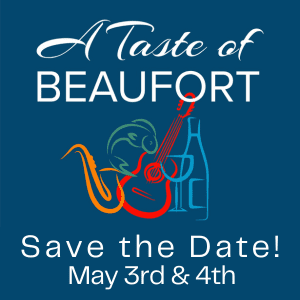 It’s early on the morning of July 5th and I’m at my desk, catching up on yesterday’s work.
It’s early on the morning of July 5th and I’m at my desk, catching up on yesterday’s work.
It was the least Fourthy Fourth I can remember at our house, with nary a dash of pomp nor circumstance. I just wasn’t feeling it. But old habits die hard, so I took the day off. It seemed the patriotic thing to do.
Our daughter was at the beach with friends. Jeff spent the day in his comfy chair, watching old movies and dabbling on his laptop. Meanwhile, I made a long-dreaded trip to TJ Maxx – alas, the seasons have changed and a woman must be clothed – then binged half a season of “Outlander” on Netflix.
I’m captivated by this romantic series set in 18thcentury Scotland, and yesterday I found myself envying those be-kilted characters, with their deep devotion to kin and country. I’m old enough to remember a time when the United States felt like that – before the American family started to unravel, politics set brother against brother (and sister), and our nation began to gnaw on its own guts.
Okay, maybe I’m being melodramatic. An “Outlander” marathon will do that to you.
But still. I was sad last week when the Betsy Ross flag moved into the ever-growing column of American symbols that once united but will now divide. Nike pulled a line of new shoes sporting the image – it was specifically created for Independence Day – after Colin Kaepernick complained that the 13-starred flag was an emblem of racism.
It wasn’t. But I guess it is now.
The Anti-Defamation League’s Center on Extremism keeps track of this stuff, maintaining a database of over 150 “hate symbols.” As of last week, the Betsy Ross flag wasn’t among them. Mark Pitcavage of the ADL acknowledged that the flag had appeared “from time to time” at white supremacist events, but said he’d never even considered adding it to the database.
Why not? Because the great majority of Americans had no idea that a small handful of white supremacists had occasionally used the symbol. When the Kaepernick brouhaha broke, there were stories all over the Internet, interviews with experts who had no clue. “If all these historians didn’t know, then Nike shouldn’t be expected to know,” Mary Beth Norton, an American history professor at Cornell University, told CNBC.
But that didn’t stop Nike from pulling the shoes. And who can blame them, really? In today’s America, nobody can afford to get caught on the wrong side of a Twitter mob, and the tiniest spark is all it takes to start a raging fire. A company can get burned.
So there went the Betsy Ross flag, up in smoke. A once proud symbol of our founding ideals – that all men are created equal, endowed by their creator with certain unalienable rights – is now a symbol of white supremacy. Because Nike has declared it so. Where does it end, I wonder? How long before our current American flag goes the way of this earlier version? Which large corporation will be the first to decide, under pressure, that the flag’s got to go – for the sake of their bottom line?
There’s a dangerous epidemic spreading: I’m not sure we have a name for it yet, but it’s the opposite of xenophobia. While the xenophobe believes America is exceptional and can do no wrong, this other type believes America is exceptionally bad and has been from the beginning. Dead-set on starting over from scratch, this latter type seems eager throw to out the baby with the proverbial bathwater, while the xenophobe is content to brag about the baby, while ignoring the bathwater – which really could use changing. I still believe most Americans want to clean up the bathwater because they love the baby, but the other two types are currently hogging the bathroom. And to beat a dead metaphor . . . it stinks.
Consider this. I read last week that the school board in San Francisco will spend $600,000 to paint over an historic mural in one of their high schools. By now, we’ve grown accustomed to the removal of “bad” art – Confederate statues, etc. – and sometimes it arguably makes sense. But this particular story has a twist.
The mural is the work of Victor Arnautoff, an important artist in the Bay Area during the Depression. His mural “City Life” in Coit Tower is downright famous. Arnautoff was a Russian immigrant – a committed Communist who believed social criticism was part of the artist’s job.
“This is why his freshly banned work, ‘Life of Washington,’ does not show the clichéd image of our first president kneeling in prayer at Valley Forge,” writes Bari Weiss in the New York Times.“ Instead, the 13-panel, 1,600-square-foot mural, which was painted in 1936 in the just-built George Washington High School, depicts his slaves picking cotton in the fields of Mount Vernon and a group of colonizers walking past the corpse of a Native American.”
The San Francisco school board voted unanimously to destroy this historic work of art. Why? In a statement, they said that the mural “does not reflect social justice.” Faauuga Moliga, a board commissioner, told the New York Times his chief concern is that “kids are mentally and emotionally feeling safe at their schools.” The board had an option to merely conceal the mural with a veil, but that option was rejected, because it allowed for the possibility that the artwork might be uncovered at some future date. Apparently, this was untenable.
I recall a time when the religious right was always protesting “offensive” works of art. (Remember “Piss Christ”?) What’s so unsettling about this impending act of destruction is that it’s coming from the left, who we once relied upon to defend controversial forms of expression. Even by new progressive standards, what this school board’s doing doesn’t make sense – not in the way that, say, removing a Confederate statue from a town square in the South might.
Though personally, I like the idea of adding new statues instead of removing old ones, I can understand and respect the argument of those who say Robert E. Lee must go and Harriet Tubman must arise in his place. But this mural in San Francisco? This mural is ahead of its time. It confronts. It challenges.
The San Francisco school board concluded that the mural “glorifies slavery, genocide, colonization, Manifest Destiny, white supremacy, oppression, etc,” but the very fact that it depicts Washington with slaves and a dead Native American suggests just the opposite. This provocative piece of work starkly contrasts our founding ideals with the actions of our founders. The idea that high school students need “protecting” from that hard truth? Well, it seems like something Sean Hannity might suggest over at Fox News, but progressives in San Francisco?
Here’s what I think: Neither the Betsy Ross flag nor the “Life of Washington” is a threat to anybody. Our nation’s history is complicated, yes, but we’re big boys and girls and we can face it – the good, the bad and the ugly. Whitewashing the “bad and the ugly” out of the picture to avoid offense is not the answer. Neither is pretending it’s “all good.”
Let’s start acting like grownups and maybe our kids will have a chance. And maybe, just maybe, next year’s Fourth will feel a little better.










